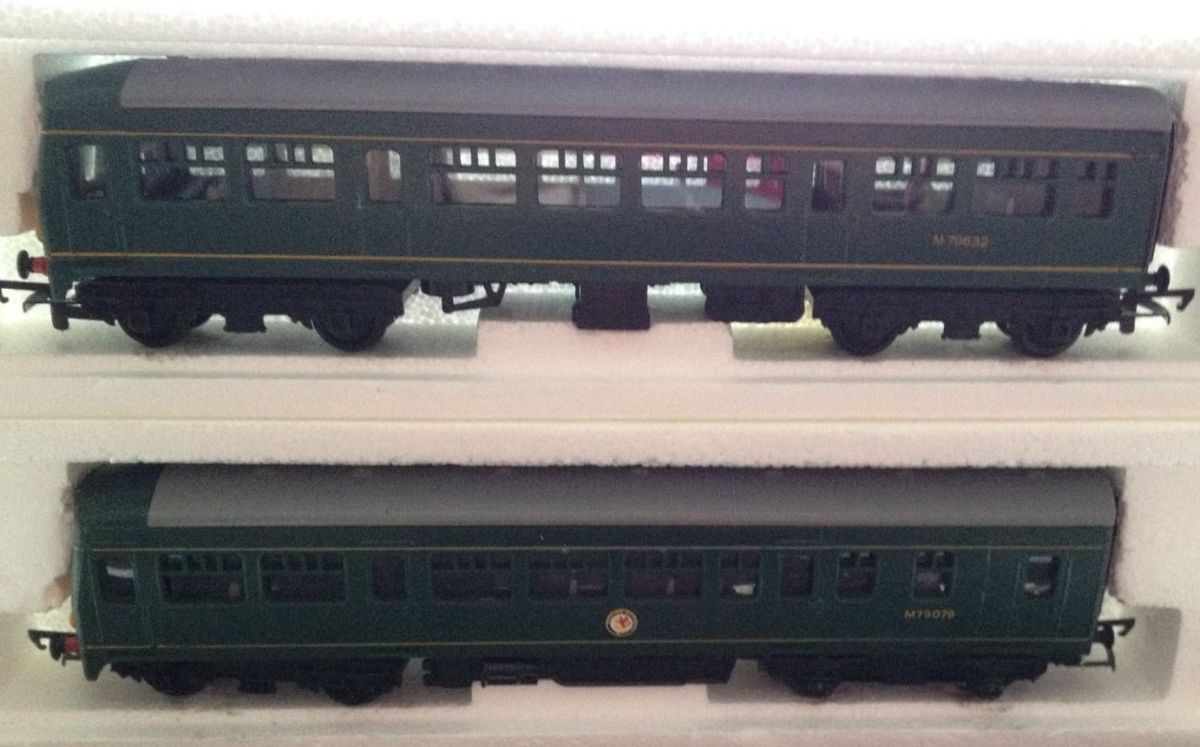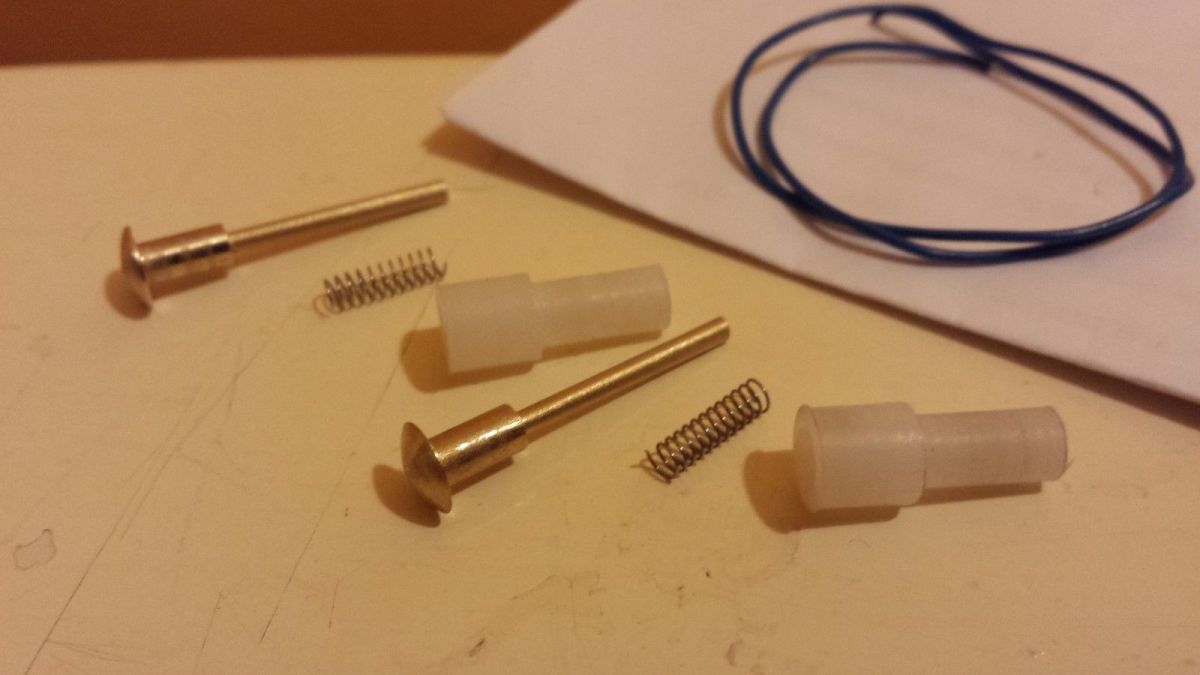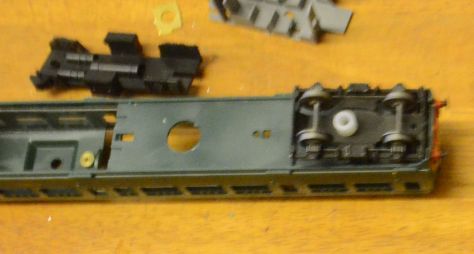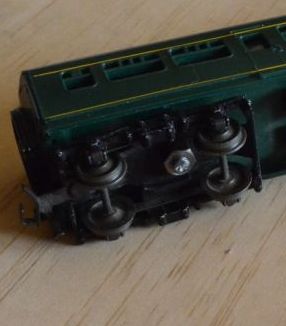O Gauge Modelling on the GWR
A personal Journey
Hornby Diesel railcar project
I can wait for a Dublo version of the SR EMU. They are going for silly prices to collectors. I want to run one on my Dublo railway and so I opted for the later Hornby 101 set with the addition of the centre car. But they are 2 rail models. So hence the project to convert the consist to 3 rail properly.
Here is a pictorial list of the items:
The motor car and dummy car.

The centre car:

A set of centre pickups, (the type used on tender pickup locomotives).

My aim is to position one or more of these as a bearing for the coach bogies. In that way it will always be in the centre of the rail.
The motor bogie is of the split axle type with one side feeding the chassis of the motor and the other side feeding the isolated brush. To make full use of the 3 rail supply, both wheel sets will feed the chassis and the pickup plunger the isolated brush on the motor. Here is a service sheet for the motor bogie, (click it to see a larger version).
First impressions on the coaches themselves. They are all incredibly light. The bogies are very light unlike the Dublo stock, these babies will jump the track. So something will have to be done to give them weight and strength to hold onto my 3 rail track. I'm thinking of butchering a Dublo coach or two and fitting the body onto it. Maybe cast bogies as well. More on this soon.
The electrics are not a problem. the wire from the pickups can go to the chassis as both rails carry the same current. The middle rail is accessed by the plunger pickup positioned in the rear bogie. The light cable is also connected to this but needs some thought as it is directional.
The problem with weight can be adjusted using lead ballast in the coach body and also the bogies, (which are so light they jump out of the track as soon as look at them). So I have butchered a B&C coach. Here is the cast bogie fitted to the dummy coach.

The cast coach bogies are a little shorter than the original and the swivel holes are off set to the centre of the bogie itself but the added weight is important. You can see the nylon bush for the pickup plunger which is used as the pivot for the bogie. It can be super glued to the body of the coach after removing the front coupling.
A low centre of gravity is crucial to keeping vehicles on their tracks and this is generally down to weight distribution in relation to their height.
I've had to replace three of the original plastic bogies with the old cast ones and the result is that the coaches now behave respectfully on the track. No need for extra lead ballast, (and the cast bogies provide low C of G weighting which is stronger than putting weights higher up and messing up the internal seating of the coaches.
Above is the motor coach. I have replaced the triang type coupling with an old Dublo one and removed the coupling from the front bogie.
Above is the dummy car with a pickup for the light again the triang coupling was replaced with an old Dublo coupling and the front one had its coupling removed. These will now make up a 2 car consist, and hopefully the numbers will light up when travelling in the right direction!
There are two places where lead weighting can usefully be deployed. In the seating sprues there are places where back to back seating sits opposite to a gangway door. Its just to the left and right of the bogie bearings and is ideal to slip a length of folded lead into. The weight is distributed evenly and helps with track adhesion.

The coupling sticks out too far and had to be shortened. I cut off the existing hole on the coupling re-drilled it and fitted it with a brass bolt securely.
Using coach bogies was a solution but probably not the best except for the weight. I was amazed at how light the newer Hornby carriages were. Also I have decided to do away with the centre car and it went for sale on ebay. So I'm back to a 2 car set.
Hornby Triang
R157 2 car set
R334 centre car
Sheet 60